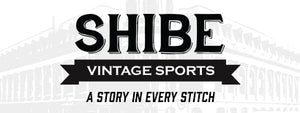March 20, 2017
Before Comcast SportsNet (now called NBC Sports Philadelphia) came about in 1997, there was the cable television channel, PRISM - which stood for Philadelphia Regional In-Home Sports and Movies.
 PRISM was launched in 1976 as a joint venture between Ed Snider’s Spectacor and 20th Century Fox. For a subscription fee of around $12, Philadelphians had, for the first time, the ability to watch all Flyers, Phillies, and Sixers home games, all Big 5 basketball matchups, and all WWF events held at the Spectrum.
PRISM was launched in 1976 as a joint venture between Ed Snider’s Spectacor and 20th Century Fox. For a subscription fee of around $12, Philadelphians had, for the first time, the ability to watch all Flyers, Phillies, and Sixers home games, all Big 5 basketball matchups, and all WWF events held at the Spectrum.
In addition to broadcasting live sporting events, PRISM showed a variety of other programming. Under the direction of Sport Director Jim Barniak, PRISM and its sister station SportsChannel Philadelphia, had a slew of sport talk shows and anthologies (The Great Sports Debate, Broad and Pattison, and Sports Scrapbook among others), as well as countless movies (and even the occasional late night skin flick). PRISM had it all. However, the station had some teething issues.
PRISM spent the first five years of existence operating at a loss. This could be attributed to the cost of acquiring the rights to broadcast sporting events and movies, as well as management’s reluctance to run advertisements. At launch, PRISM had a grand total of six subscribers. In the early days of cable, there were very few cable providers and the vast majority of American urban areas were not wired for cable. Those who were fortunate enough to live in an area with the necessary wiring faced astronomical costs. In 1976 PRISM’s $12 price tag was the equivalent of $52.20 in 2017 dollars. At a time when gasoline cost $0.59 per gallon, and median income was around $13,000, PRISM was a luxury that many families could simply not afford.
By 1986, PRISM had a subscriber base of approximately 370,000 households in the Philadelphia area. The majority of these subscribers were suburbanites, as much of the actual city of Philadelphia remained unwired for cable. However, there was a slight loophole that Philadelphian’s could exploit. From 1983-1985, the signal for PRISM was broadcast over the air via WWSG Channel 57. The signal was scrambled, however, this scrambled signal was easily decoded with the proper equipment. This arrangement ended after channel 57 was sold to a new owner and changed over to an entertainment channel later to become UPN-57 (now CW Philly).
In 1990, Cablevision launched a sport-specific basic cable channel called SportsChannel. This channel carried PRISM sport events in the event that there was a scheduling conflict. While the channels were affiliated, they maintained their own separate graphics and announcing teams until 1995, when Cablevision created a uniform appearance that was used on both channels. With a growing network of channels, a new 10-year carrier deal with Comcast, and an ever growing subscriber base, life must have been looking pretty sweet to PRISM’s management. Unbeknownst to all, the end was nigh.
The end of PRISM came rather suddenly in the form of the juggernaut that is Comcast. In 1996, Comcast acquired Spectacor and all of its assets, including the Philadelphia Flyers, and the Philadelphia 76ers, the Spectrum, and the new arena now known as the Wells Fargo Center. The new Comcast-Spectacor behemoth announced that they would be allowing the Flyers and Sixers broadcast deals with PRISM to lapse in favor of starting a new regional sports network that would be centered around their team’s games. PRISM had already lost their TV deal with the Big 5 over a monetary dispute, and now lost two of their three professional sports broadcast deals.
In the meantime, Cablevision sold a 40% stake in their sports holdings to Fox/Liberty media for a cool $850 million in June of 1997. PRISM was meant to be rolled into the new Fox Sports Networks, with national pieces being mixed in with local content. There was a slight issue with this however, as the Phillies had just jumped ship to Comcast. This left PRISM with no long-term commitments from any sport organization. Fox decided that the best way to handle this was at the negotiating table. In late summer, Comcast and Fox came to an agreement. PRISM and SportsChannel were shutdown on October 1st, 1997, and the Sixers were let out of their broadcast deal. In exchange, SportsChannel's signal was purchased by Comcast to be used by the new Comcast SportsNet, while PRISM’s signal was retained by Fox/Liberty, and hosted the Premium movie channel Starz!. Just like that, PRISM was gone.
PRISM and SportsChannel undoubtedly changed the course of Philadelphia sports fandom. Prior to PRISM, Philly fans had three options for consuming Philly sports. They could go to the game, listen to it on the radio, or read about it the next day in The Bulletin, Inquirer, or Daily News. They could also hope and pray that their team was good enough to feature on nationally televised games. Outside of the ranks of the dedicated beat writer, the sport media lens was very broad and unfocused. PRISM was a key part in focusing that lens in Philly, and came about at a time where all of the teams were winning. This success, coupled with the ability to watch that success helped to create the Philadelphia superfan of today.

